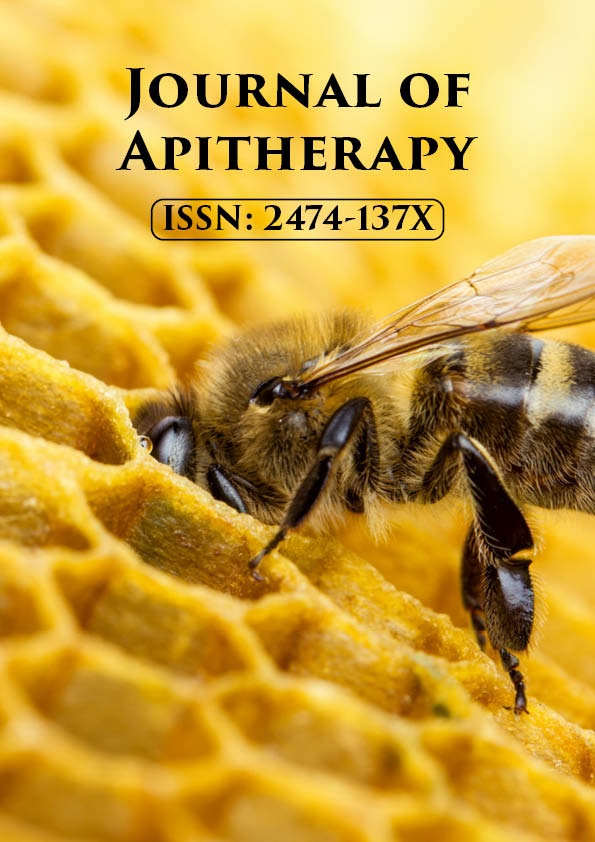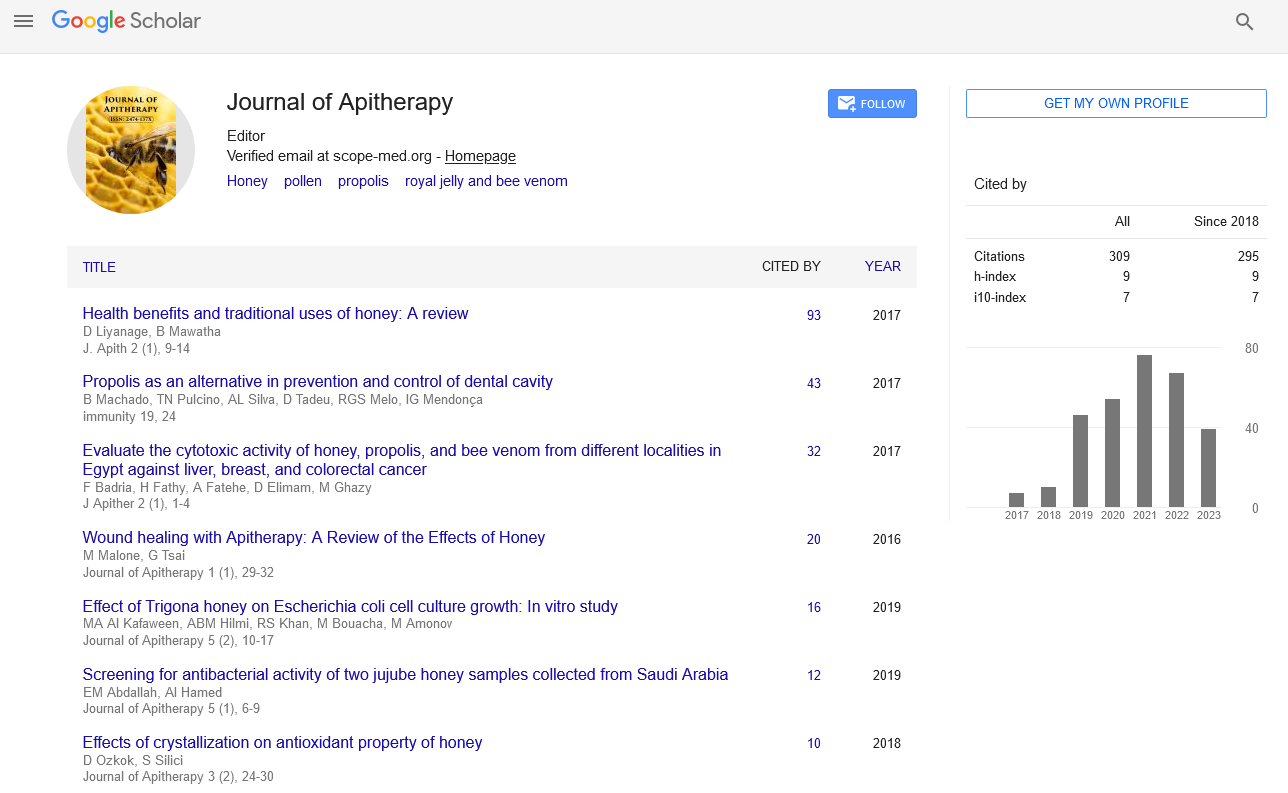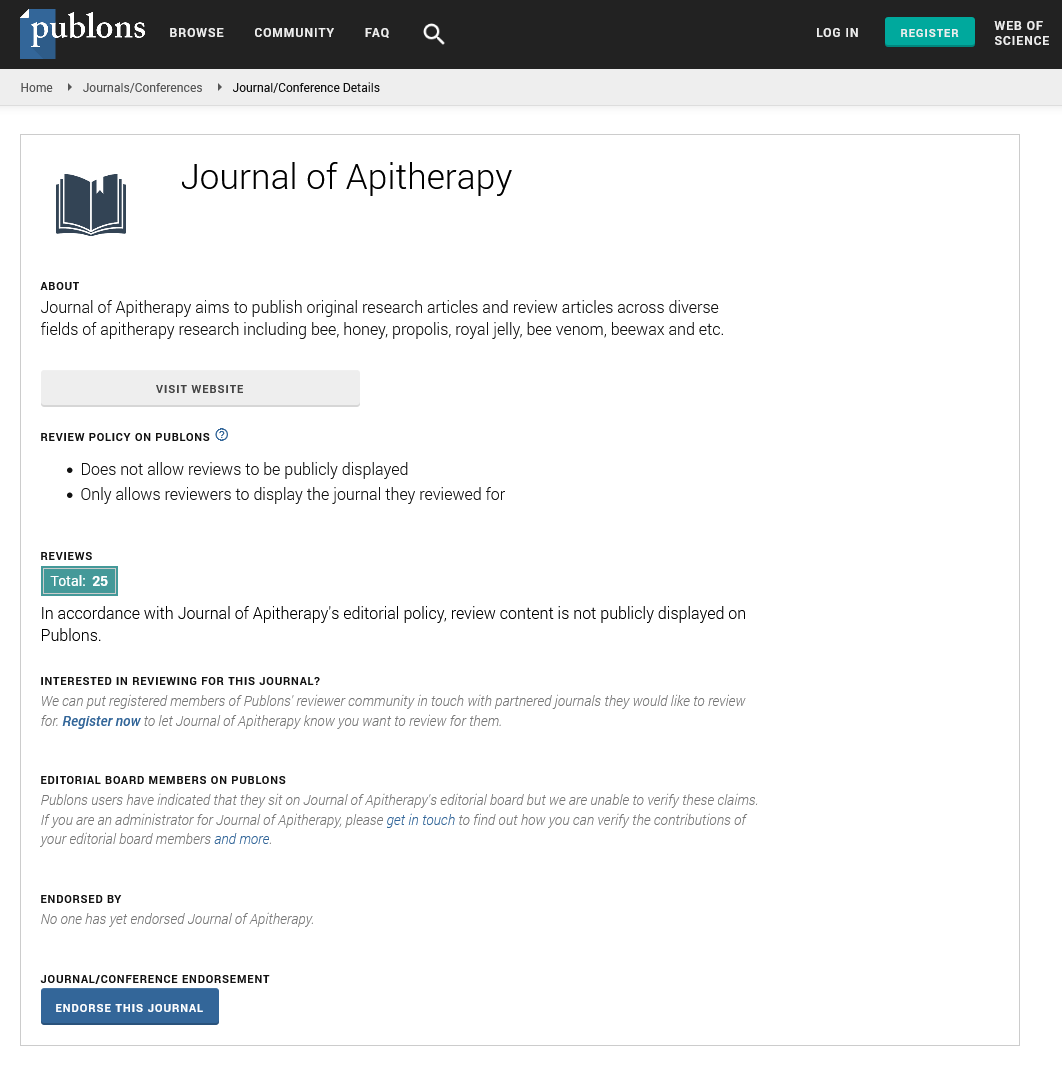Opinion - Journal of Apitherapy (2023)
Bee Acupuncture: Navigating the Sting of Traditional Medicine
Zhijie Yao*Zhijie Yao, Department of Forensic Medicine and Toxicology, Zagazig University, Egypt, Email: Zhijie@gmail.com
Received: 09-Oct-2023, Manuscript No. JAPITHERAPY-23-123323; Editor assigned: 11-Oct-2023, Pre QC No. JAPITHERAPY-23-123323 (PQ); Reviewed: 25-Oct-2023, QC No. JAPITHERAPY-23-123323; Revised: 02-Nov-2023, Manuscript No. JAPITHERAPY-23-123323 (R); Published: 09-Nov-2023
Description
In the realm of alternative therapies, bee acupuncture, also known as apipuncture, has buzzed into the spotlight as a unique and unconventional approach to health and wellness. Rooted in traditional medicine practices that span centuries and cultures, bee acupuncture involves intentionally receiving bee stings at specific points on the body. This controversial practice, believed to harness the healing properties of bee venom, has garnered attention for its potential therapeutic effects and, at the same time, raised concerns about safety and ethical considerations [1,2].
The bee venom composition
Bee venom is a complex mixture of biologically active compounds, each contributing to its potential therapeutic effects. The key components include
Melittin: The primary component, melittin, is a peptide with anti-inflammatory properties. It is believed to influence the immune response and modulate inflammation.
Apamin: This peptide has neuroprotective effects and may contribute to the analgesic properties of bee venom. Apamin is thought to affect the central nervous system and potentially alleviate pain.
Phospholipase A2: An enzyme that plays a role in the production of inflammatory mediators. Controlled amounts of phospholipase A2 may contribute to the anti-inflammatory effects of bee venom.
Histamine: Bee venom contains histamine, a compound associated with immune responses and inflammation. The release of histamine may influence vasodilation and immune modulation [3].
Bee acupuncture process
Bee acupuncture involves intentionally introducing live bees to specific acupuncture points on the body. Acupuncturists may use forceps to hold the bee and place its stinger at the desired acupuncture point, allowing the bee to sting. The stinger is then carefully removed to avoid harm to the bee.
In some cases, practitioners may use a technique called "bee venom therapy," where dried venom is collected from bees and then mixed with a carrier substance, such as saline solution, before being injected or applied topically [4].
Potential therapeutic effects
Proponents of bee acupuncture and bee venom therapy suggest a range of potential therapeutic effects:
Anti-inflammatory properties: Bee venom's anti-inflammatory properties are thought to be beneficial for conditions involving inflammation, such as arthritis and joint pain.
Pain relief: The neuroprotective and analgesic effects of bee venom components may contribute to pain relief. Some believe that bee acupuncture could be effective for managing chronic pain conditions.
Immune modulation: Bee venom may influence the immune system, potentially modulating immune responses and enhancing overall immune function.
Neurological benefits: The neuroprotective properties of bee venom components, such as apamin, have led to investigations into their potential role in neurodegenerative conditions and nervous system disorders.
Blood circulation: Traditional beliefs suggest that bee venom can stimulate blood circulation and enhance the flow of vital energy throughout the body.
Scientific evidence and research challenges
While the historical use and anecdotal reports highlight the potential benefits of bee acupuncture, scientific evidence supporting its efficacy is limited and often inconclusive. Challenges in researching bee acupuncture include:
Variable practices: Bee acupuncture practices vary widely, making it challenging to establish standardized protocols for research. Factors such as the number of stings, bee species used, and the duration of treatment can differ between studies.
Placebo effect: The placebo effect may play a significant role in the reported benefits of bee acupuncture. The act of intentionally receiving bee stings may create a psychological expectation of improvement, influencing subjective outcomes.
Ethical concerns: The use of live bees for acupuncture raises ethical concerns related to animal welfare. Ensuring the well-being of the bees and addressing ethical considerations is essential in the exploration of bee acupuncture [5].
Future directions and challenges
The future of bee acupuncture as a recognized therapeutic modality faces several challenges and considerations:
Research rigor: Conducting rigorous, well-designed clinical trials with standardized protocols is essential to establish the safety and efficacy of bee acupuncture for specific health conditions.
Ethical practices: The development of ethical guidelines and practices that prioritize the well-being of the bees involved in acupuncture procedures is crucial. Ensuring responsible and humane treatment aligns with principles of animal welfare.
Individualized approaches: Recognizing the variability in individual responses and the potential for adverse reactions, future research should explore individualized approaches to bee acupuncture based on patient characteristics and health conditions [6,7].
Navigating the sting of tradition and science
Bee acupuncture, with its roots in ancient healing practices, presents a unique intersection of tradition and modern exploration. While anecdotal reports and historical usage highlight the potential benefits, the scientific community calls for rigorous research to establish the safety, efficacy, and ethical considerations surrounding this unconventional therapy.
References
- Ghosh S, Namin SM, Jung C. Differential bacterial community of bee bread and bee pollen revealed by 16s rRNA high-throughput sequencing. Insects 2022;13:863.
[Crossref] [Google Scholar] [pubmed]
- Gunes-Bayir A, Bilgin MG, Guclu D, Pogda S, Dadak A. Preparation and evaluation of novel functional fermented dairy products containing propolis and cinnamon. J Food Sci Technol 2022; 59: 2392-2401.
[Crossref] [Google scholar] [pubmed]
- Wei J, Fei Z, Pan G, Weiss LM, Zhou Z. Current therapy and therapeutic targets for microsporidiosis. Front Microbiol 2022;9:835390.
[Crossref] [Google scholar] [pubmed]
- Zhao Y, An J, Su H, Li B, Liang D, Huang C. Antimicrobial food packaging integrating polysaccharide-based substrates with green antimicrobial agents: A sustainable path. Food Res Int 2022;155:111096.
[Crossref] [Google scholar] [pubmed]
- Toutiaee S, Mojgani N, Harzandi N, Moharrami M, Mokhberosafa L. In vitro probiotic and safety attributes of Bacillus spp. isolated from beebread, honey samples and digestive tract of honeybees Apis mellifera. Lett Appl Microbiol 2022;74:656-665.
[Crossref] [Google scholar] [pubmed]
- Park J, Kim YJ, Suh SH, Kim MG, Kwak HS, Kim SH, Heo EJ. Evaluation of hygiene indicators and sampling plan for detecting microbial contamination in health functional foods. J Food Prot 2022; 85:844-848.
[Crossref] [Google scholar] [pubmed]
- Luo X, Dong Y, Gu C, Zhang X, Ma H. Processing technologies for bee products: An overview of recent developments and perspectives. Front Nutr 2021; 8:727181
[Crossref] [Google Scholar] [Pubmed]







